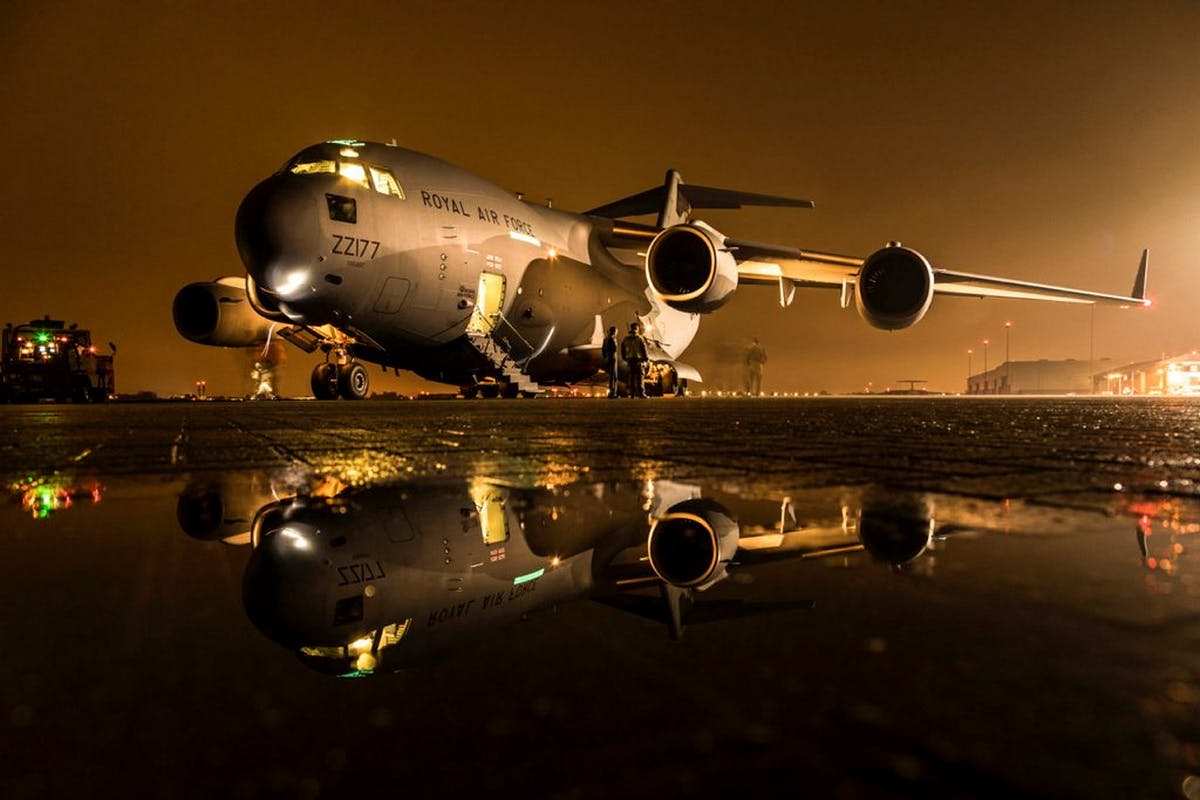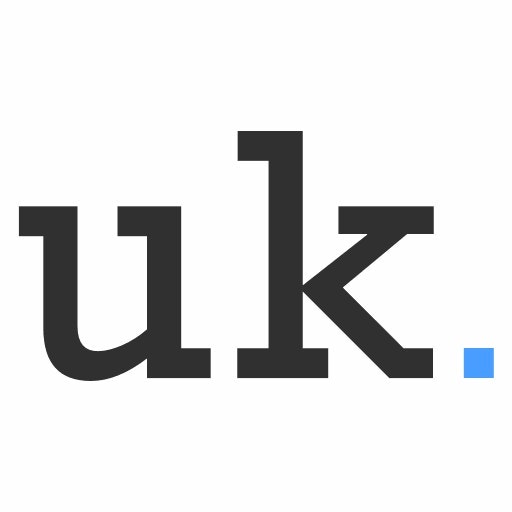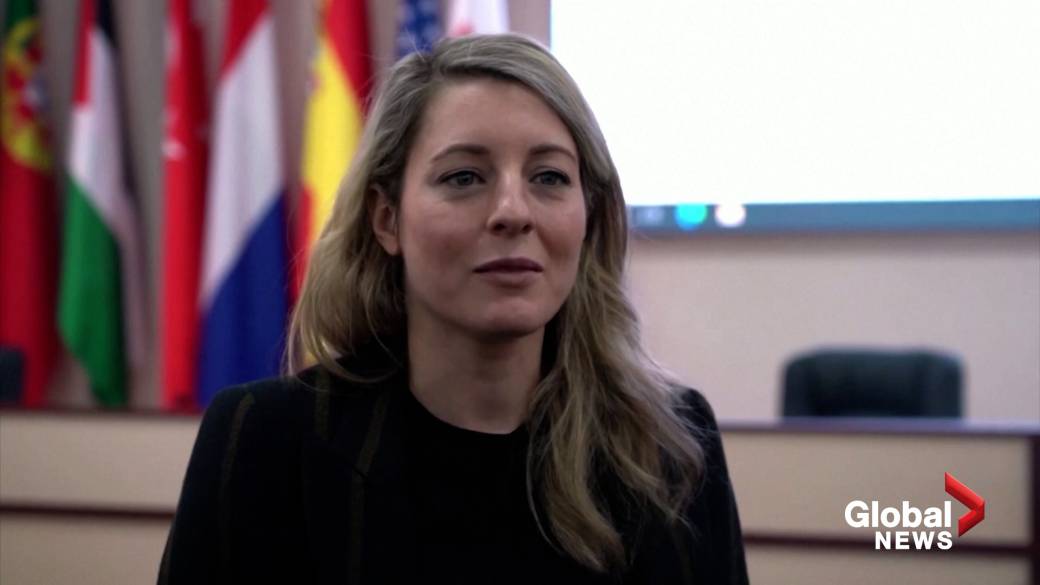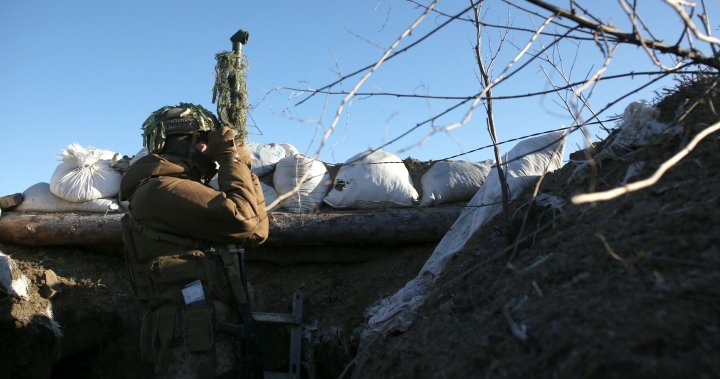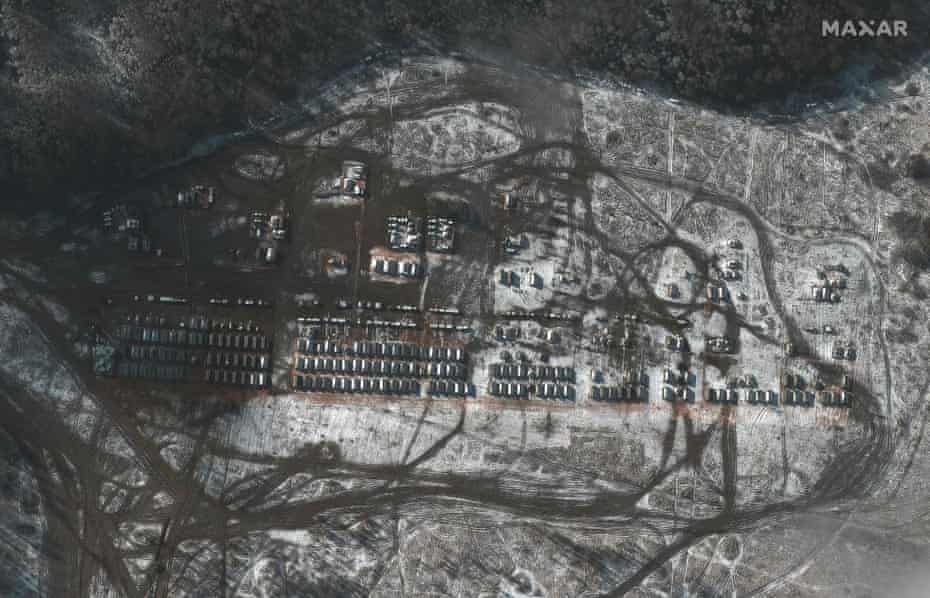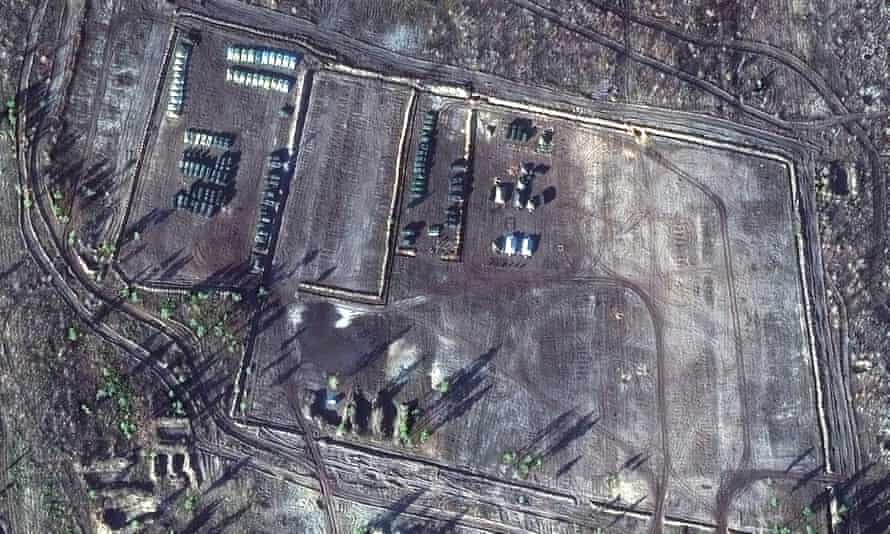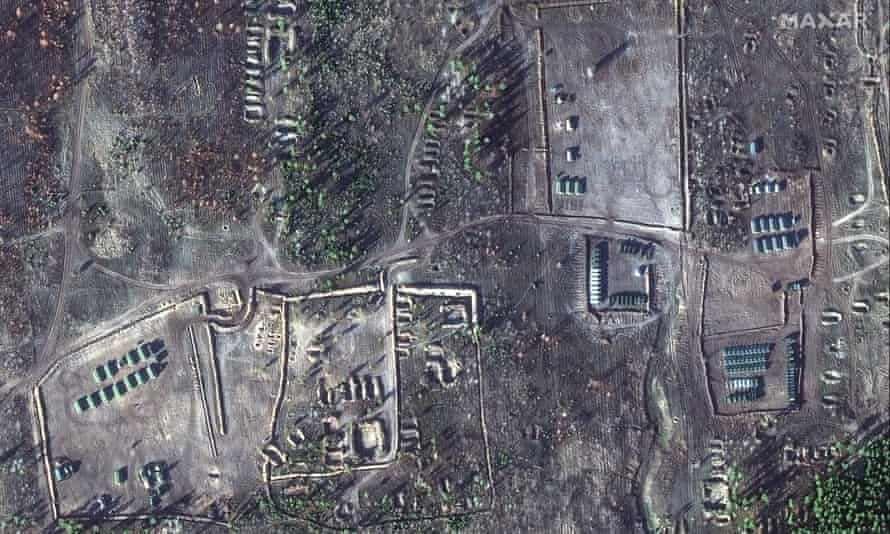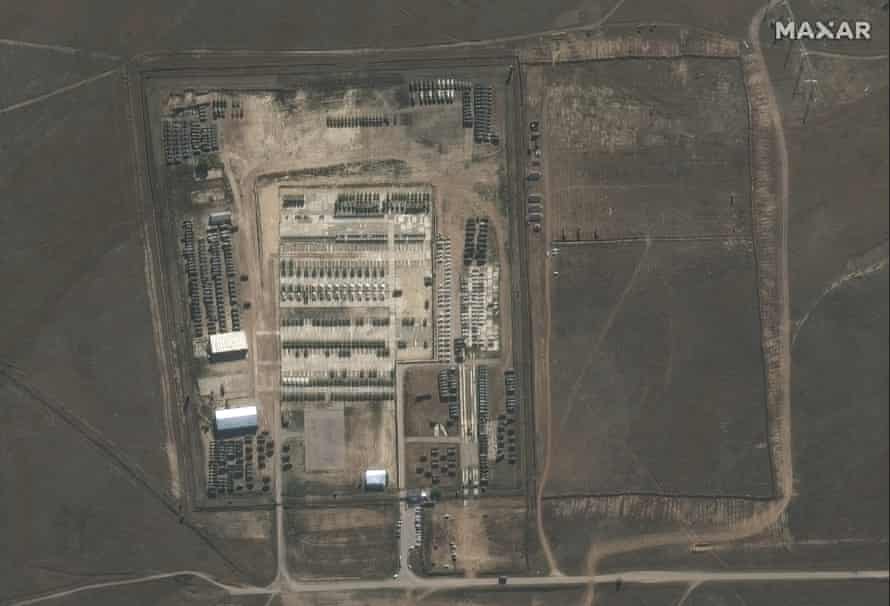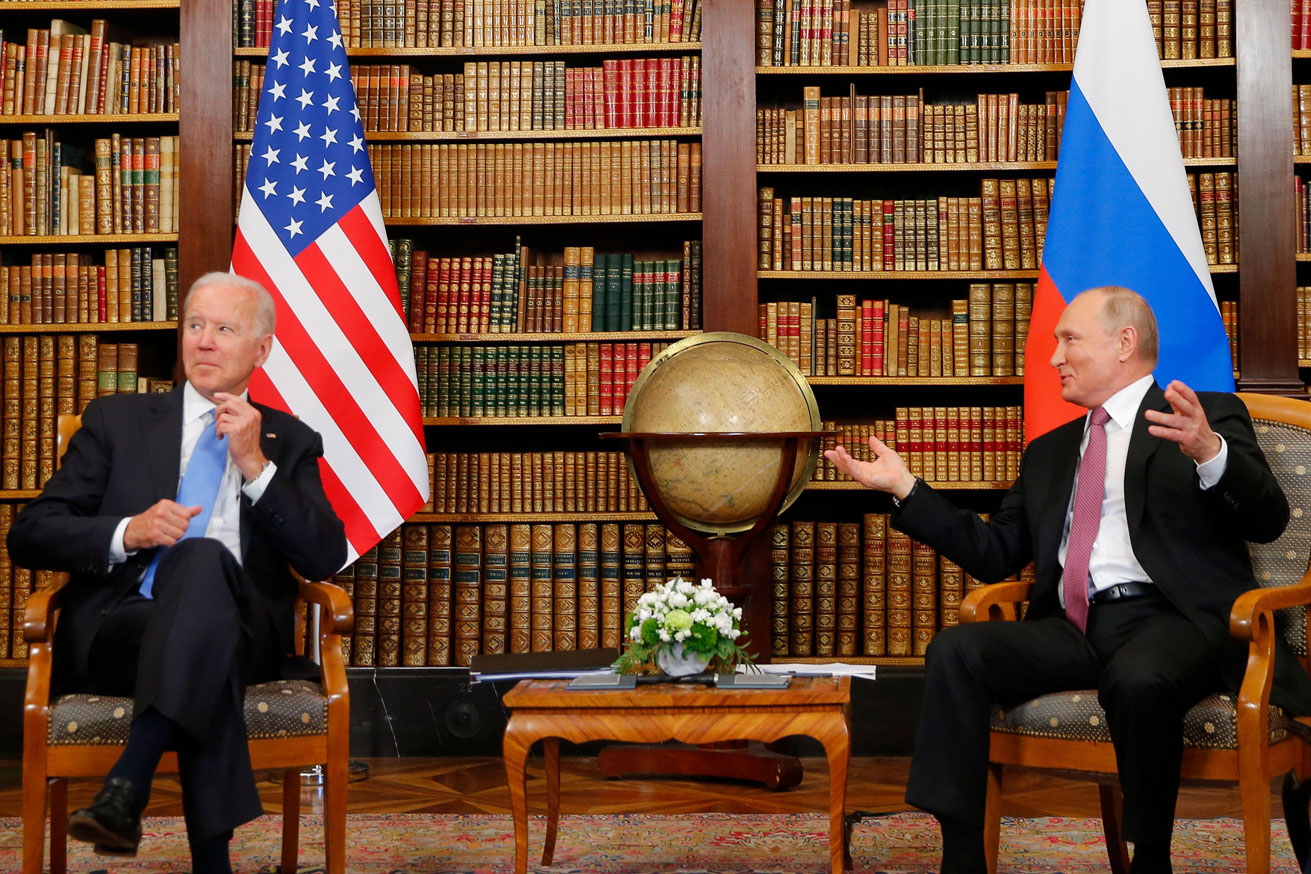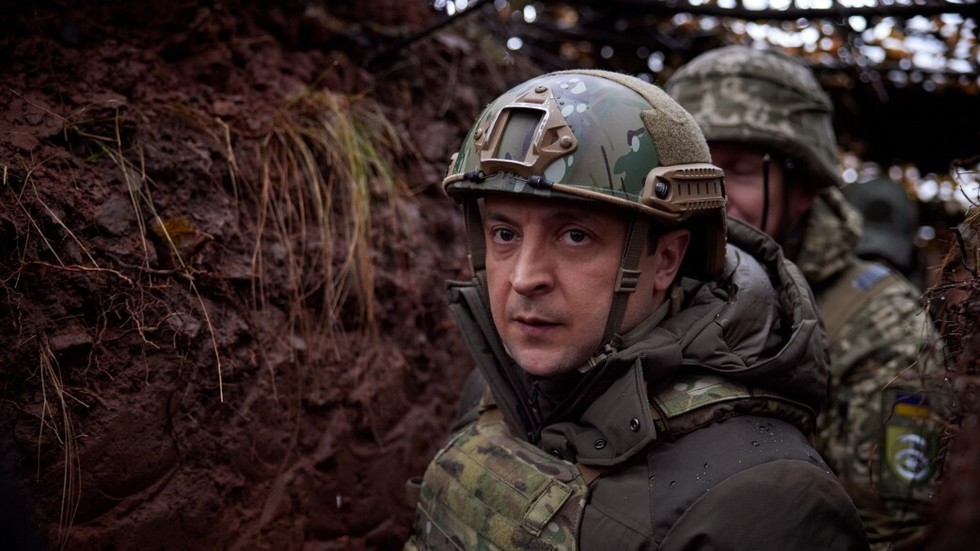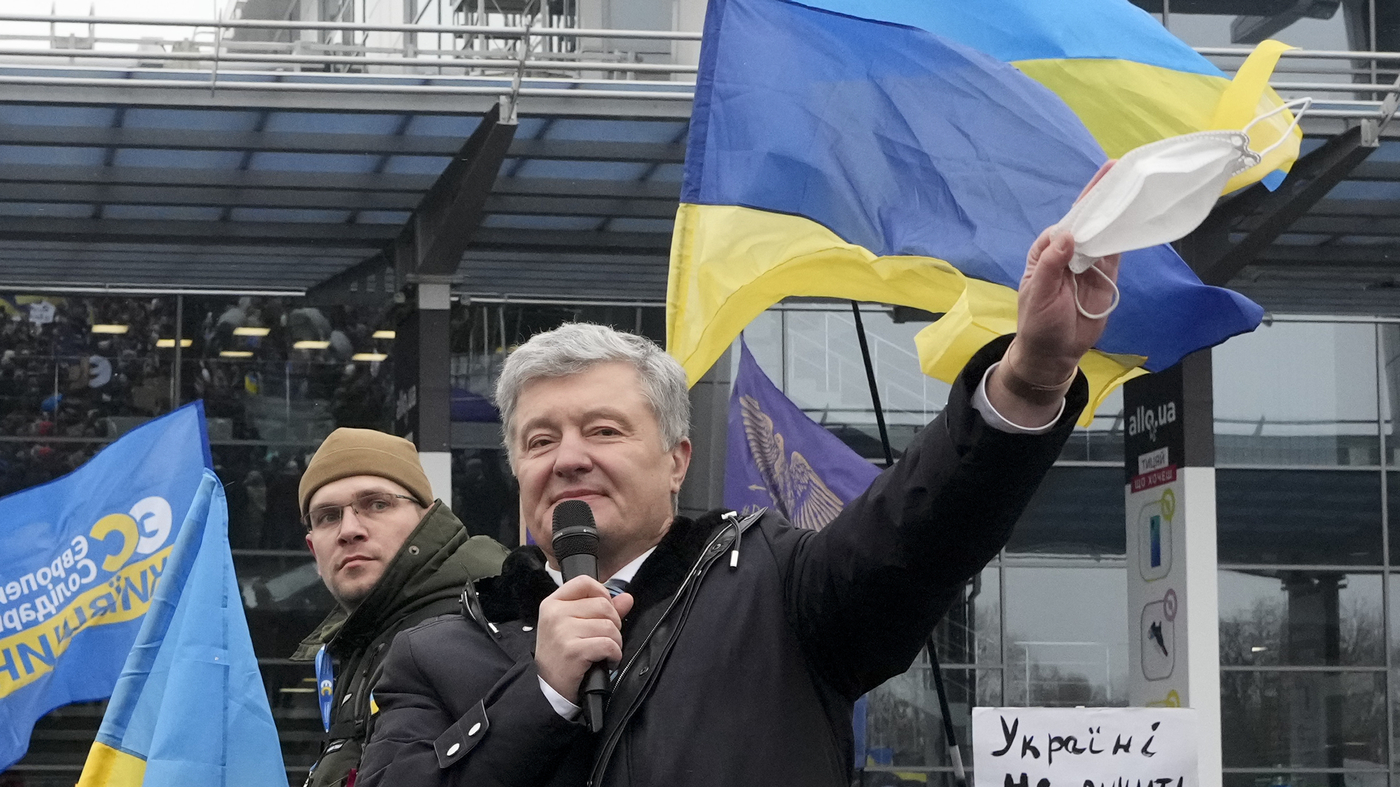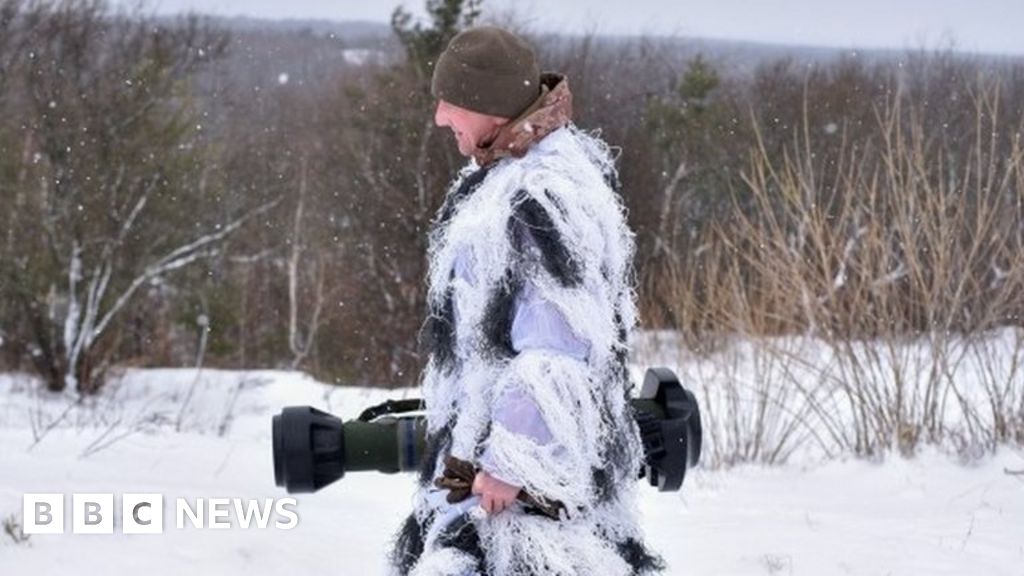Counter-Errorist
THINK TANK
Secretary of state says Vladimir Putin’s military intentions still unclear ahead of talks in Geneva
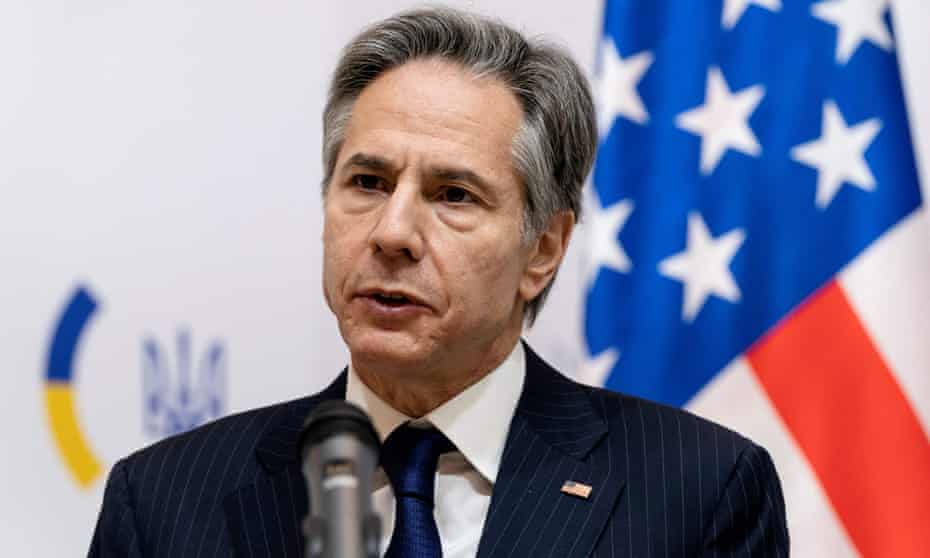
Antony Blinken gives a press conference following his meeting with the Ukrainian foreign minister in Kyiv. Photograph: Alex Brandon/AFP/Getty Images
Luke Harding in Kyiv and Andrew Roth in Moscow
Wed 19 Jan 2022 16.44 GMT
The US secretary of state, Antony Blinken, has said Russia could take “further aggressive action” against Ukraine “at any moment”, adding that Vladimir Putin’s military intentions were still unclear as he prepared for talks with his Russian counterpart at the end of the week.
Speaking after meeting Ukraine’s president, Volodymyr Zelenskiy, in Kyiv, Blinken said Russia had amassed “very significant forces” on Ukraine’s borders, including in Belarus where major exercises are due to begin next month. It could double them in “relatively short order”, he said.
Before talks on Friday in Geneva with Russia’s foreign minister, Sergei Lavrov, Blinken said he was relentlessly pursuing a peaceful solution to the crisis. But there seem few signs that Moscow and Washington can reach diplomatic agreement in Switzerland.
The Kremlin wants Nato forces to withdraw from eastern Europe and to return to 1997 levels of deployment. Russia’s deputy foreign minister, Sergei Rybakov, said on Wednesday that Moscow would be satisfied with a unilateral US commitment to vote against Nato membership for Ukraine.
Blinken said he did not have a “piece of paper” by way of answer to Russia’s latest security demands, but he appeared to rule out a veto promise over Ukraine’s future, saying closing Nato’s doors to new members was an “absolute non-starter”.
US officials have described the Kremlin military buildup as extremely dangerous, with the White House spokesperson Jen Psaki saying an onslaught could happen at any time. Asked what Russia might do next, Blinken said: “I can’t read Vladimir Putin’s mind.”
But he pointed out that Russia’s president had a long history of aggressive behaviour. This included attacking Georgia in 2008 and annexing Crimea in 2014, and “training, arming and leading” a separatist rebellion in eastern Ukraine. Blinken added: “We have to base our actions on the facts.”
After Kyiv, Blinken is due to travel to Berlin for talks with German and European allies. Ukraine’s foreign minister, Dmytro Kuleba, said relations with the US were advancing at “Formula One speed”. He acknowledged Russia was refusing to negotiate with his government directly, saying: “Mr Lavrov is avoiding me.”
Russia has brushed off calls to withdraw its troops from the Ukrainian border by saying it has a right to deploy its forces wherever it likes on its own territory. It also has rejected US allegations that it is preparing a pretext to invade Ukraine. Lavrov dismissed the US claim of a Russian “false-flag operation” as “total disinformation”.
Speaking at a meeting of the Valdai discussion club, Ryabkov repeated Moscow’s denials it had plans to attack Ukraine.
“I am confident that there is no risk of a large-scale war that could break out in Europe or somewhere else. We do not intend to take any aggressive steps,” he said. “We have no intention of attacking, staging an offensive on or invading Ukraine.”
Ryabkov said Moscow would not consider an informal moratorium on Ukraine’s entrance into Nato sufficient. “If the US assumes a unilateral legally binding commitment that it will never vote in favour of admitting Ukraine and other countries to Nato, we will be ready to consider this option. It would be an easier path for the US,” he added.
Meanwhile, Russia continued its deployment of military assets from its far east to the borders of Ukraine. Open source researchers said on Wednesday they had identified elements of a BM-27 Uragan rocket artillery launcher in Belarus about 200km (125 miles) from Kyiv.
The deployment of heavy rocket artillery so close to the Ukrainian capital could further increase fears that the plans for joint exercises could provide cover for a Russian-led advance that could quickly engulf Kyiv and its government.
On Wednesday Russia’s defence ministry released fresh details of the joint exercises, which are set to begin next month and continue until 20 February. Russia was planning to deploy 12 Sukhoi Su-35 air defence fighters to Belarus for the exercises, along with S-400 and Pantsir anti-air defence systems, the ministry said in a statement.
The Biden administration has promised to boost military assistance to Ukraine in the event of a Russian operation, but has ruled out sending troops. On Wednesday Blinken said military support was continuing, with deliveries last year at their highest level since 2014.
The US has also been supplying Ukraine with classified intelligence. The CIA director, William Burns, visited Kyiv last week and shared its risk assessment with Zelenskiy’s cabinet, a US official said.
Zelenskiy said he was counting on enhanced US cooperation. “Grateful for US’s political & security support. Count on enhancing economic & financial cooperation. I’m sure there will be no decision about Ukraine without Ukraine,” he wrote in a tweet.
The US has promised massive financial and economic consequences in the event of invasion. Officials say Washington remains committed to seeking a “diplomatic off-ramp” and add that the Geneva talks suggest diplomacy is “perhaps not dead”.
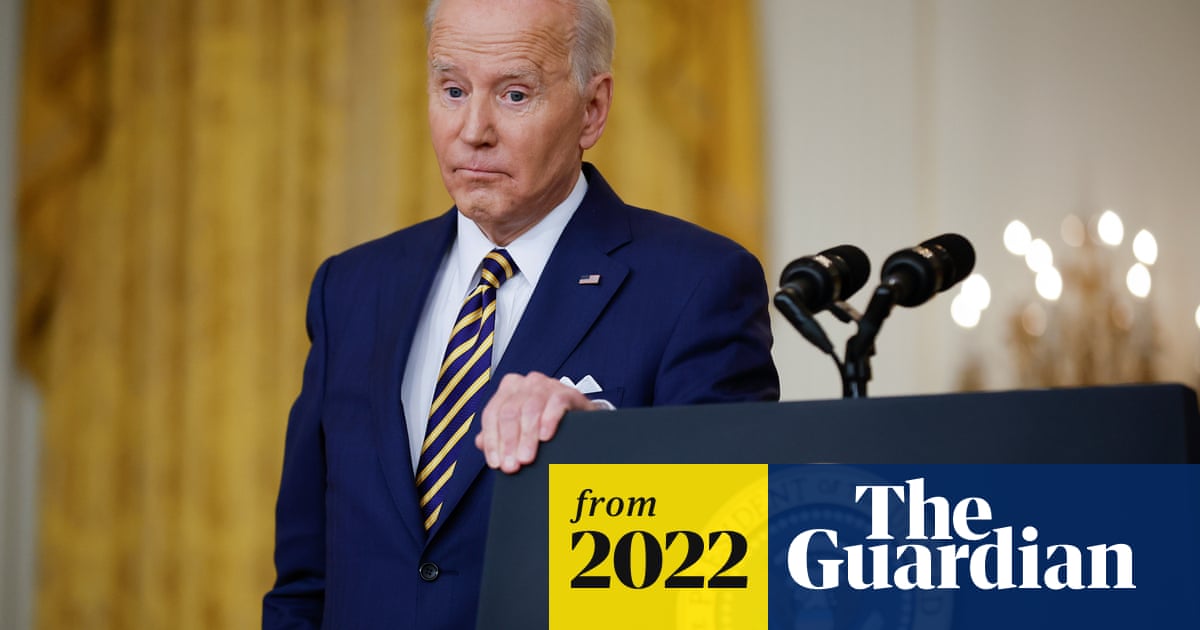
 www.theguardian.com
www.theguardian.com

Antony Blinken gives a press conference following his meeting with the Ukrainian foreign minister in Kyiv. Photograph: Alex Brandon/AFP/Getty Images
Luke Harding in Kyiv and Andrew Roth in Moscow
Wed 19 Jan 2022 16.44 GMT
The US secretary of state, Antony Blinken, has said Russia could take “further aggressive action” against Ukraine “at any moment”, adding that Vladimir Putin’s military intentions were still unclear as he prepared for talks with his Russian counterpart at the end of the week.
Speaking after meeting Ukraine’s president, Volodymyr Zelenskiy, in Kyiv, Blinken said Russia had amassed “very significant forces” on Ukraine’s borders, including in Belarus where major exercises are due to begin next month. It could double them in “relatively short order”, he said.
Before talks on Friday in Geneva with Russia’s foreign minister, Sergei Lavrov, Blinken said he was relentlessly pursuing a peaceful solution to the crisis. But there seem few signs that Moscow and Washington can reach diplomatic agreement in Switzerland.
The Kremlin wants Nato forces to withdraw from eastern Europe and to return to 1997 levels of deployment. Russia’s deputy foreign minister, Sergei Rybakov, said on Wednesday that Moscow would be satisfied with a unilateral US commitment to vote against Nato membership for Ukraine.
Blinken said he did not have a “piece of paper” by way of answer to Russia’s latest security demands, but he appeared to rule out a veto promise over Ukraine’s future, saying closing Nato’s doors to new members was an “absolute non-starter”.
US officials have described the Kremlin military buildup as extremely dangerous, with the White House spokesperson Jen Psaki saying an onslaught could happen at any time. Asked what Russia might do next, Blinken said: “I can’t read Vladimir Putin’s mind.”
But he pointed out that Russia’s president had a long history of aggressive behaviour. This included attacking Georgia in 2008 and annexing Crimea in 2014, and “training, arming and leading” a separatist rebellion in eastern Ukraine. Blinken added: “We have to base our actions on the facts.”
After Kyiv, Blinken is due to travel to Berlin for talks with German and European allies. Ukraine’s foreign minister, Dmytro Kuleba, said relations with the US were advancing at “Formula One speed”. He acknowledged Russia was refusing to negotiate with his government directly, saying: “Mr Lavrov is avoiding me.”
Russia has brushed off calls to withdraw its troops from the Ukrainian border by saying it has a right to deploy its forces wherever it likes on its own territory. It also has rejected US allegations that it is preparing a pretext to invade Ukraine. Lavrov dismissed the US claim of a Russian “false-flag operation” as “total disinformation”.
Speaking at a meeting of the Valdai discussion club, Ryabkov repeated Moscow’s denials it had plans to attack Ukraine.
“I am confident that there is no risk of a large-scale war that could break out in Europe or somewhere else. We do not intend to take any aggressive steps,” he said. “We have no intention of attacking, staging an offensive on or invading Ukraine.”
Ryabkov said Moscow would not consider an informal moratorium on Ukraine’s entrance into Nato sufficient. “If the US assumes a unilateral legally binding commitment that it will never vote in favour of admitting Ukraine and other countries to Nato, we will be ready to consider this option. It would be an easier path for the US,” he added.
Meanwhile, Russia continued its deployment of military assets from its far east to the borders of Ukraine. Open source researchers said on Wednesday they had identified elements of a BM-27 Uragan rocket artillery launcher in Belarus about 200km (125 miles) from Kyiv.
The deployment of heavy rocket artillery so close to the Ukrainian capital could further increase fears that the plans for joint exercises could provide cover for a Russian-led advance that could quickly engulf Kyiv and its government.
On Wednesday Russia’s defence ministry released fresh details of the joint exercises, which are set to begin next month and continue until 20 February. Russia was planning to deploy 12 Sukhoi Su-35 air defence fighters to Belarus for the exercises, along with S-400 and Pantsir anti-air defence systems, the ministry said in a statement.
The Biden administration has promised to boost military assistance to Ukraine in the event of a Russian operation, but has ruled out sending troops. On Wednesday Blinken said military support was continuing, with deliveries last year at their highest level since 2014.
The US has also been supplying Ukraine with classified intelligence. The CIA director, William Burns, visited Kyiv last week and shared its risk assessment with Zelenskiy’s cabinet, a US official said.
Zelenskiy said he was counting on enhanced US cooperation. “Grateful for US’s political & security support. Count on enhancing economic & financial cooperation. I’m sure there will be no decision about Ukraine without Ukraine,” he wrote in a tweet.
The US has promised massive financial and economic consequences in the event of invasion. Officials say Washington remains committed to seeking a “diplomatic off-ramp” and add that the Geneva talks suggest diplomacy is “perhaps not dead”.

Joe Biden thinks Russia will attack Ukraine – but will face a ‘stiff price’
US president alarms government in Kyiv by saying Nato was divided on how to respond to ‘minor incursion’

